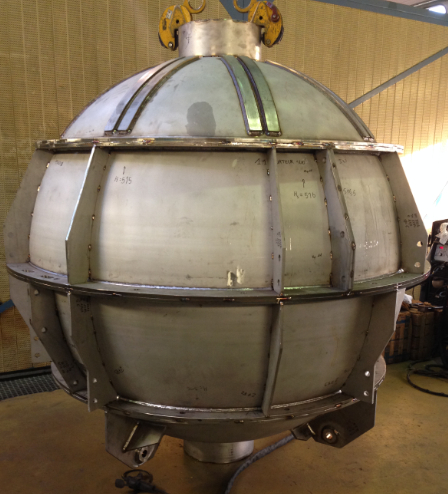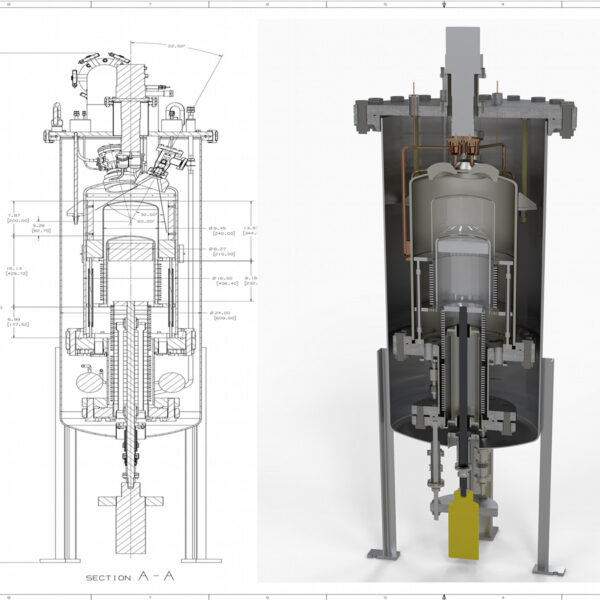Low Background Techniques
Background radiation is always present on Earth’s surface – it is generated by cosmic particles, and Earth itself. Because astroparticle physics experiments are so sensitive, they require ultra-low background radiation levels.
Interaction rates in dark matter detectors may be as low as one event per tonne of target material per year, so removing all potential sources of radioactivity is essential. Without doing this, radioactive particle interactions would overwhelm the data, hiding any actual dark matter signals.

Techniques to achieve very low background levels were developed for SNO and enabled that experiment to be successful. Current and future generation experiments will be even more demanding as they become more sensitive. Physicists need to develop new techniques for purifying detector materials to remove any contamination, and new tools sensitive enough to measure the remaining levels of radioactivity in detector and construction materials. This development provides an opportunity to work with industrial partners in building components from low-activity materials that are protected from contaminants during the building process.
McDonald Institute members have unique access to both a clean underground lab at SNOLAB and a radioactive sample testing facility at Laurentian University. Research and testing at these facilities will expand knowledge and expertise to qualify and quantify backgrounds and will focus on developing technologies to measure radiation in complex materials in order to screen them for use in experiments.

One of the experiments developing and using low background techniques is the NEWS-G dark matter experiment. This project is searching for low-mass dark matter, which produces very low energy signals in the detector. Because the dark matter signature is so low, this experiment is using archeological lead found in a Roman shipwreck to protect their detector. This lead is less radioactive than any lead commercially available. NEWS-G also uses copper to shield the detector and will eventually use copper that has been created via electroforming at SNOLAB in order to reach the level of purity required.

Another experiment using advanced technology is the Scintillating Bubble Chamber. In addition to being in the mine at SNOLAB, this experiment is also using specialized fused silica jars for the active fluid, in addition to developing new low-background connectors for their thermometers. This experiment will be encased in steel for further protection.

Another researcher, Ryan Martin, is developing with his team new Machine Learning techniques that remove background signals, which will be useful across many different experiments, including but not limited to SNO+, LEGEND, and NEWS-G.
The research program will include:
- Developing and using ultra-low background germanium counters
- Enhancing capability to measure and protect against radon at unprecedentedly low levels
- Establishing full background models
- Developing high sensitivity beta-alpha counting devices
- Commissioning and operating specialized analytical instrumentation and spectrometers
- Developing radiochemical techniques to concentrate samples to levels of detectability
